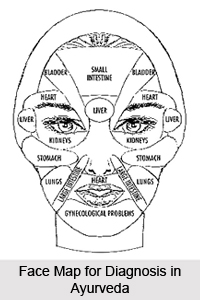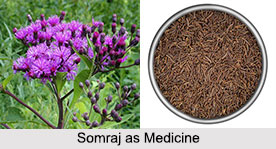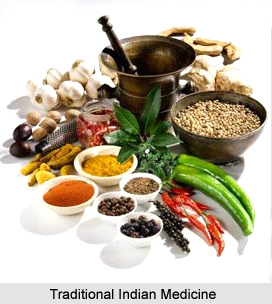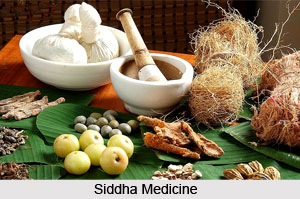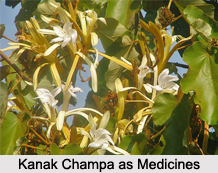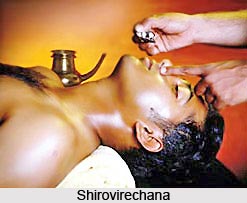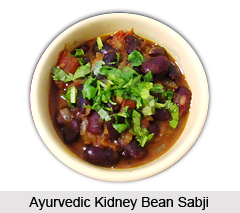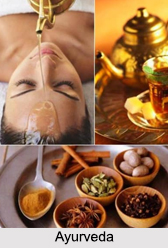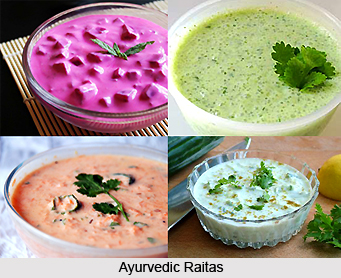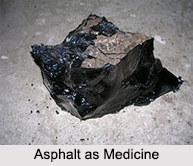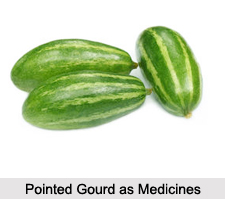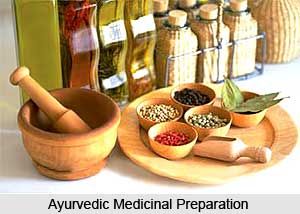 Sweda, the third major mala, occurs as a waste product during the synthesis of medha dhatu (fatty tissue) from mansa dhatu (muscular tissue). It is released by sweat glands and comes out of the body through skin pores. Modified smooth muscle cells, scientifically termed as `myoepithelial cells`, present at the base of the sweat glands, help in the elimination of sweat by their contraction. There are about 3 million active sweat glands in the body. Sweat glands may be classified into two types: the eccrine glands and the apocrine glands. The eccrine glands constitute the majority and are usually present throughout the surface. They are abundantly present on the palms and soles and can be also found on the head, trunk and the extremities. The glands on palms and soles do not respond to temperature but secrete at times of emotional stress. These glands secrete dilute sweat containing substances like sodium chloride, urea, uric acid, creatinine, lactates, ammonia, amino acids, glucose as well as water-soluble vitamins B and C. This sweat is not just a filtrate of blood but is the product of an exhaustive process though the composition depends on the constituents of blood. The apocrine glands are larger than the eccrine glands. They are in fact derivatives of the hair follicles and include the `ceruminal glands` of the ear, those of the eyelid, and the mammary glands. The distribution of these large glands vary from individual to individual as well as from race to race and are confined to special regions like `axilla`, `areola of the nipples`, `mons pubis`, `labia majora` and others. These glands do not become active until a person reaches puberty and are under the control of the hormone adrenaline. Their secretion is viscid, milky and odourless at first. After a person attains puberty, the sweda secreted from these glands varies in composition and tends to have a characteristic odour. Bacterial activity in the presence of the secretions contributes to the intensity and the quality of the odour.
Sweda, the third major mala, occurs as a waste product during the synthesis of medha dhatu (fatty tissue) from mansa dhatu (muscular tissue). It is released by sweat glands and comes out of the body through skin pores. Modified smooth muscle cells, scientifically termed as `myoepithelial cells`, present at the base of the sweat glands, help in the elimination of sweat by their contraction. There are about 3 million active sweat glands in the body. Sweat glands may be classified into two types: the eccrine glands and the apocrine glands. The eccrine glands constitute the majority and are usually present throughout the surface. They are abundantly present on the palms and soles and can be also found on the head, trunk and the extremities. The glands on palms and soles do not respond to temperature but secrete at times of emotional stress. These glands secrete dilute sweat containing substances like sodium chloride, urea, uric acid, creatinine, lactates, ammonia, amino acids, glucose as well as water-soluble vitamins B and C. This sweat is not just a filtrate of blood but is the product of an exhaustive process though the composition depends on the constituents of blood. The apocrine glands are larger than the eccrine glands. They are in fact derivatives of the hair follicles and include the `ceruminal glands` of the ear, those of the eyelid, and the mammary glands. The distribution of these large glands vary from individual to individual as well as from race to race and are confined to special regions like `axilla`, `areola of the nipples`, `mons pubis`, `labia majora` and others. These glands do not become active until a person reaches puberty and are under the control of the hormone adrenaline. Their secretion is viscid, milky and odourless at first. After a person attains puberty, the sweda secreted from these glands varies in composition and tends to have a characteristic odour. Bacterial activity in the presence of the secretions contributes to the intensity and the quality of the odour.
There are different types of sweating conditions under which sweda is released. Insensible perspiration that occurs even in cold climate amounts to 600 to 800 ml daily. Thermal sweating occurs in hot environmental temperature, the temperature range varying from 28 degree centigrade in man to 31 degree centigrade in woman. As the environmental temperature rises sweating increases and the quantity may rise to 11 litres per day under extreme conditions. It is to be specifically noted that when the surrounding temperature is higher than the body temperature sweating is the only method of keeping the body temperature normal, provided that the humidity is low enough for the sweat to evaporate. Human beings may also undergo emotional sweating where the sweda is chiefly released through the palms, soles and axilla and occassionally through the head, neck and other parts. In muscular exercise, the sweating is both thermal and emotional. In hot climates, eating of spicy foods (like capsicum or curry) stimulates sweating, because `pain nerve endings in the mouth are stimulated. Sweda may also be produced under certain physiological disturbances like nausea and vomiting, fainting, hypoglycaemia and `asphyxia` (excess of carbon dioxide and lack of oxygen).
The release of sweda is a vital need of the body. It controls body temperature and helps in maintaning the electrolytic balance. It is indispensable for the normal formation and flow of sweat to take place or else the body may suffer from skin infections, itching or burning sensations, loss of fluid balance, reduced body temperature and the like.






